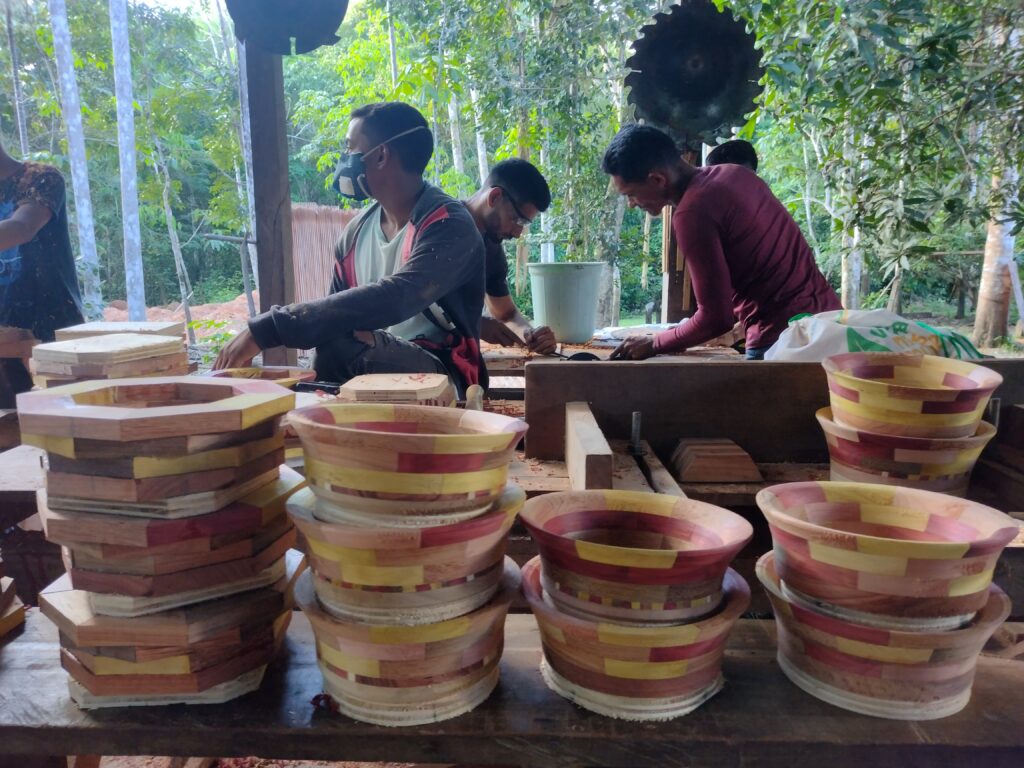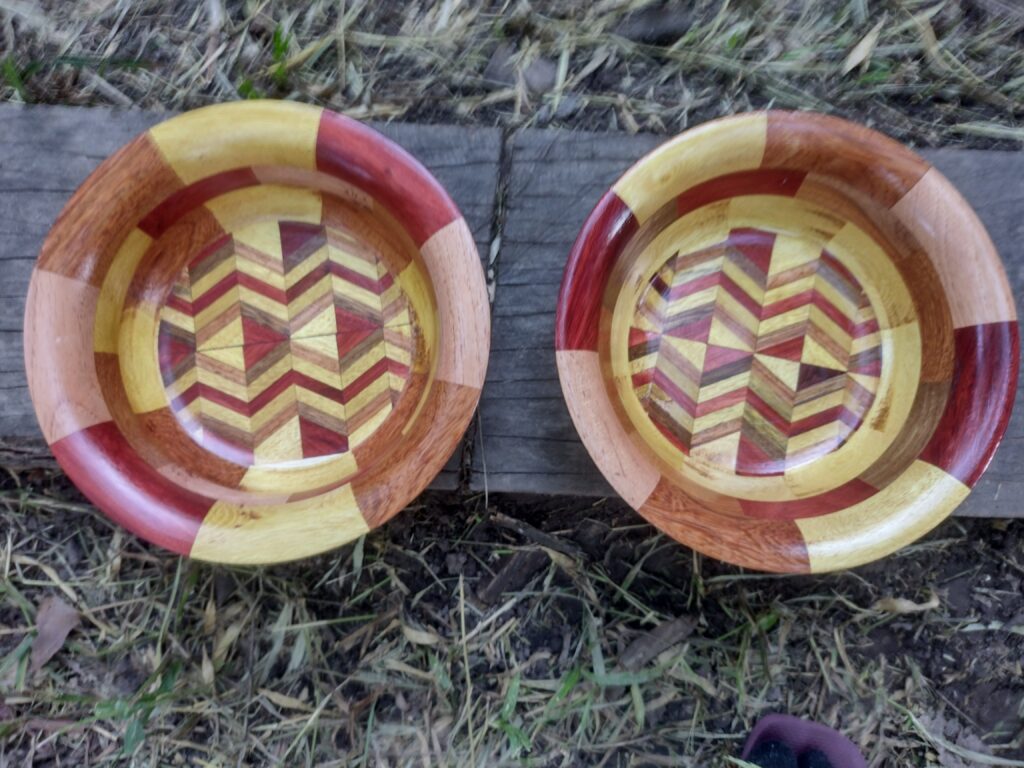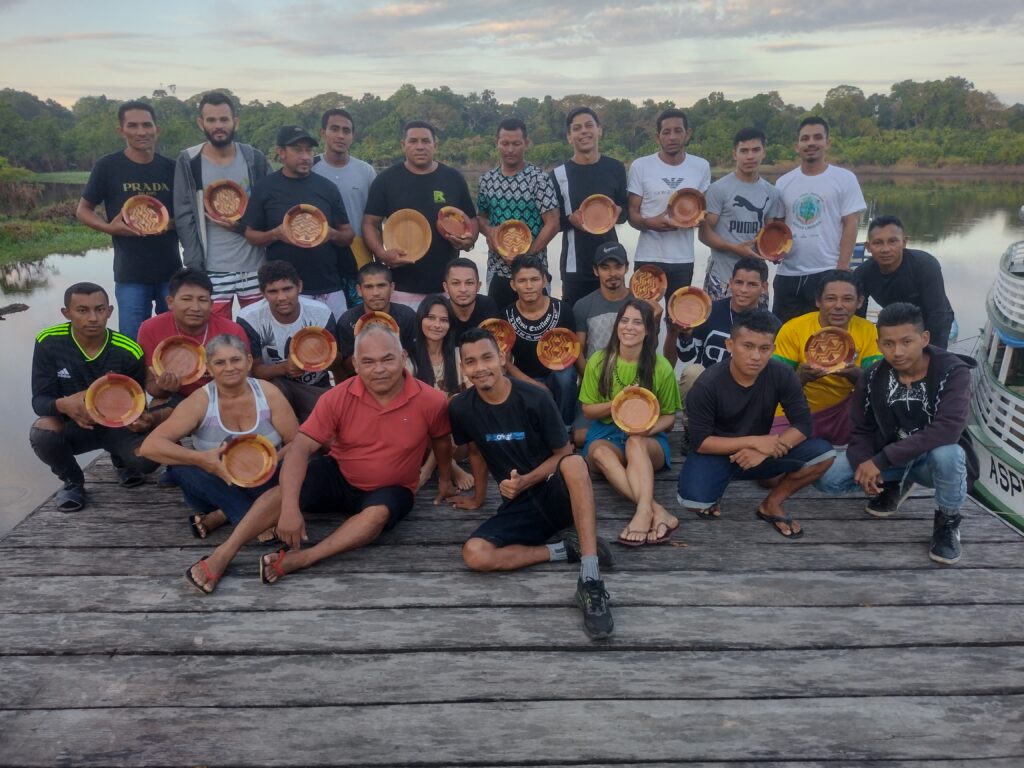The training for 31 community members took place from June 21st to 25th in the São Raimundo community, in the Mid-Juruá Extractive Reserve (RESEX), in the municipality of Carauari
By Karina Pinheiro and Nathália Messina

Instituto Juruá held the second edition of the marquetry course in the month of June, as part of an exchange that will culminate in the workspace of Nov’Arte, located at FAM – Almerinda Malaquias Foundation, in the municipality of Novo Airão (AM). The course had the participation of two members from Instituto Juruá, the local communicator and educator, Maria Cunha and the socio-environmental analyst, Nathalia Messina. The event had the partnership with Nov’Arte Producers Association, Association of Rural Producers of Carauari do Produtores Rurais de Carauari (ASPROC), Association of Residents of São Raimundo Community (AMECSARA); Chico Mendes Institute for Biodiversity Conservation (ICMBio), State Secretariat of the Environment (SEMA/DEMUC-AM); Amazônia Nativa Operation (OPAN), and the strategic collaboration of the Amazonas Agroforestry and Sustainable Development Institute (IDAM-AM).
Thus, the first edition of the course was offered, which had already taken place in November 2022 at the Campina base, located in the Uacari Sustainable Development Reserve, in the Middle Juruá Territory. Based on this experience, it was possible to identify some individuals who were interested but couldn’t participate in that moment, so they were called for the second edition. Additionally, the need to further explore some techniques that had been less explored previously.
This time, the course took place in São Raimundo Community, in the Mid-Juruá Extractive Reserve, located in the municipality of Carauari, in the Amazonian State, from June 21st to 25th.

The second edition of the woodcraft workshop featured new practical learnings about marquetry, an artistic technique for crafting objects through angled cuts, fitting, gluing, and refinement. One of the main techniques taught in this edition was turning,which involves creating rounded and cylindrical profiles using a stationary that rotates the piece. In addition to practical lessons, the woodcrafters and apprentices also received theoretical acknowledge, particularly to the introduction of marquestry (by masters Edvaldo e Tiago), product pricing (by Nathália Messina), a presentation by IDAM (David Frankling), and a panel discussion on the wood production chain.
The five-day course had the participation of 31 students from different communities. “It was an amazing experience, I actively participated in the course as a collaborator. I have a great perspective of seeing this become a productive chain here in the community since we already have two wood processing workshops equipped to work on this, teaching and empowering people in utilizing wood as a source of income”, affirms Maria Cunha.

The exchange regarding ‘Wooden Crafts’ has emerged from the interest of the riverside communities in the Middle Juruá aiming to promote the socio-bioeconomy and Small-Scale Sustainable Forest Management Plans (PMFSPE). The focus on utilizing timber natural resources and qualifying professionals involved in this art, with the purpose of increasing the familiar income and communitary.
According to the student Henrique Cunha, “the course has been an inspiration since the first edition and brings something hidden to us: our potential. It makes us realize ”the magnitude of the potential that communities have within the territory! We discovered many talents; the teachers motivated us a lot. It’s a great experience to be part of the marquetry process, the opportunity to work within the community, and to seek experience while also helping our partners”, he explained.
As a result, the 31 participants, in addition to the training, crafted 31 marquetry and turned fruit bowls as well as plates, boxes, cell phone holders, earring, amulets, among other pieces. We also take into account that the students left the course more united and engaged around a common idea, more sensitized about sustainable wood management, as well as aware of their role in the chain, by valuing forest products.